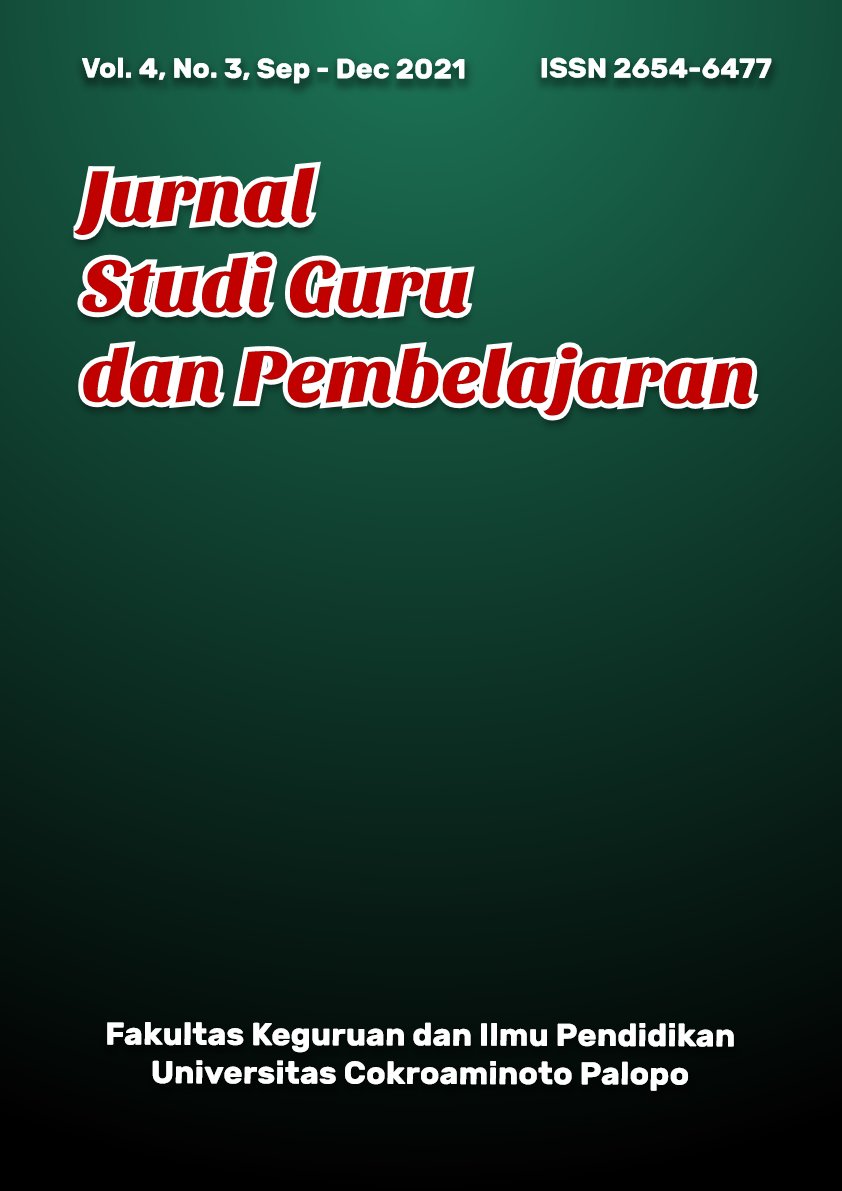Organizational Agility in Educational Setting: A Case Study of Sekolah Murid Merdeka
DOI:
https://doi.org/10.30605/jsgp.4.3.2021.1487Keywords:
agility, organizational agility, agile schoolAbstract
Agility becomes the most significant dimension in facing the Volatility, Uncertainty, Complexity and Ambiguity (VUCA) situation. Schools as a key organisation in surviving any environment changes need to adapt and adjust. On the other hand, schools are viewed as conventional institutions. Comfortable with a traditional approach in managing the organization, schools consider as one of the latter in implementing change management. Lack of discussion and research related to agility in schools, particularly kindergarten to high school (K12) setting encourage this article to conduct a case study in one of the fastest growing schools in Indonesia namely Sekolah Murid Merdeka (SMM). This article was conducted using a qualitative method complemented with a survey as triangulation approach. The result from this research is that SMM argues to be implementing agility as a key variable in executing the operational system. Agility became a significant dimension in helping SMM adjust with the current environment and market demand thus resulted in gaining almost 10000 students in one year.
Downloads
References
Farzaneh, E., seyed ali, S., Saeed, R., & Reza, H. (2014). Organizational agility in public and private schools. International Journal of Education And Applied Sciences, 1(1), 54–59. http://injoeas.com/journal/final journal issue 1.pdf#page=59
Gupta, N., & Bharadwaj, S. S. (2013). Agility in business school education through richness and reach: A conceptual model. Education and Training, 55(4), 370–384. https://doi.org/10.1108/00400911311326018 DOI: https://doi.org/10.1108/00400911311326018
Joiner, B. (2019). Leadership Agility for Organizational Agility. Journal of Creating Value, 5(2), 139–149. https://doi.org/10.1177/2394964319868321 DOI: https://doi.org/10.1177/2394964319868321
Khakivatan, N., Abbasian, H., & Arasteh, H. (2021). Study The Agility of Human Resources in the education. 9(1).
Klaus, S. (2018). The Global Competitiveness Report. In World Economic Forum.
Manurung, A. H., & Kurniawan, R. (2021). Organizational agility: do agile project management and networking capability require market orientation? International Journal of Managing Projects in Business, ahead-of-p(ahead-of-print). https://doi.org/10.1108/IJMPB-10-2020-0310 DOI: https://doi.org/10.1108/IJMPB-10-2020-0310
Marope, M., Griffin, P., & Gallagher, C. (2017). Future competences and the future of curriculum. International Bureau of Education, 1–60. http://www.ibe.unesco.org/sites/default/files/resources/future_competences_and_the_future_of_curriculumexecsummary.pdf
MENON, S. (2020). Organizational Agility Assessment for Higher Education Institution. Journal of Research on the Lepidoptera, 51(1), 561–573. https://doi.org/10.36872/lepi/v51i1/301050 DOI: https://doi.org/10.36872/LEPI/V51I1/301050
Menon, S., & Suresh, M. (2021). Factors influencing organizational agility in higher education. Benchmarking, 28(1), 307–332. https://doi.org/10.1108/BIJ-04-2020-0151 DOI: https://doi.org/10.1108/BIJ-04-2020-0151
Omidvar, A., Zahed, A., Moeinikia, M., & Khaleghkhah, A. (2021). Relationship Between Organizational Agility, Innovative Work Behaviors, and Job Satisfaction Among the Second-grade High School Teachers. Journal School of Psychology, 9(4), 86–95. https://doi.org/10.32598/jspi.9.4.7 DOI: https://doi.org/10.32598/JSPI.9.4.7
Sadeghi, M., & Kalantari, M. R. (2021). The Relationship between Knowledge Management and Organizational Intelligence and Organizational Agility among High School Principals. 4(1), 101–118.
Sambamurthy, V., Bharadwaj, A., & Grover, V. (2003). Shaping agility through digital options: Reconceptualizing the role of information technology in contemporary firms. MIS Quarterly: Management Information Systems, 27(2), 237–264. https://doi.org/10.2307/30036530 DOI: https://doi.org/10.2307/30036530
Sherehiy, B., Karwowski, W., & Layer, J. K. (2007). A review of enterprise agility: Concepts, frameworks, and attributes. International Journal of Industrial Ergonomics, 37(5), 445–460. https://doi.org/10.1016/j.ergon.2007.01.007 DOI: https://doi.org/10.1016/j.ergon.2007.01.007
Trinh-Phuong, T., Molla, A., & Peszynski, K. (2012). Enterprise system-enabled organizational agility capability: A construct and measurement instrument. Proceedings - Pacific Asia Conference on Information Systems, PACIS 2012.
Yusuf, Y. Y., Sarhadi, M., & Gunasekaran, A. (1999). Agile manufacturing: the drivers, concepts and attributes. International Journal of Production Economics, 62(1), 33–43. https://doi.org/10.1016/S0925-5273(98)00219-9 DOI: https://doi.org/10.1016/S0925-5273(98)00219-9
Zhang, Z., & Sharifi, H. (2000). A methodology for achieving agility in manufacturing organisations. International Journal of Operations and Production Management, 20(4), 496–513. https://doi.org/10.1108/01443570010314818 DOI: https://doi.org/10.1108/01443570010314818
Downloads
Published
How to Cite
Issue
Section
License
In submitting the manuscript to the journal, the authors certify that:
- They are authorized by their co-authors to enter into these arrangements.
- The work described has not been formally published before, except in the form of an abstract or as part of a published lecture, review, thesis, or overlay journal.
- That it is not under consideration for publication elsewhere,
- That its publication has been approved by all the author(s) and by the responsible authorities – tacitly or explicitly – of the institutes where the work has been carried out.
- They secure the right to reproduce any material that has already been published or copyrighted elsewhere.
- They agree to the following license and copyright agreement.
License and Copyright Agreement
Authors who publish with JSGP agree to the following terms:
- Authors retain copyright and grant the journal right of first publication with the work simultaneously licensed under Creative Commons Attribution License (CC BY-SA 4.0) that allows others to share the work with an acknowledgement of the work's authorship and initial publication in this journal.
- Authors are able to enter into separate, additional contractual arrangements for the non-exclusive distribution of the journal's published version of the work (e.g., post it to an institutional repository or publish it in a book), with an acknowledgement of its initial publication in this journal.
- Authors are permitted and encouraged to post their work online (e.g., in institutional repositories or on their website) prior to and during the submission process, as it can lead to productive exchanges, as well as earlier and greater citation of published work.














